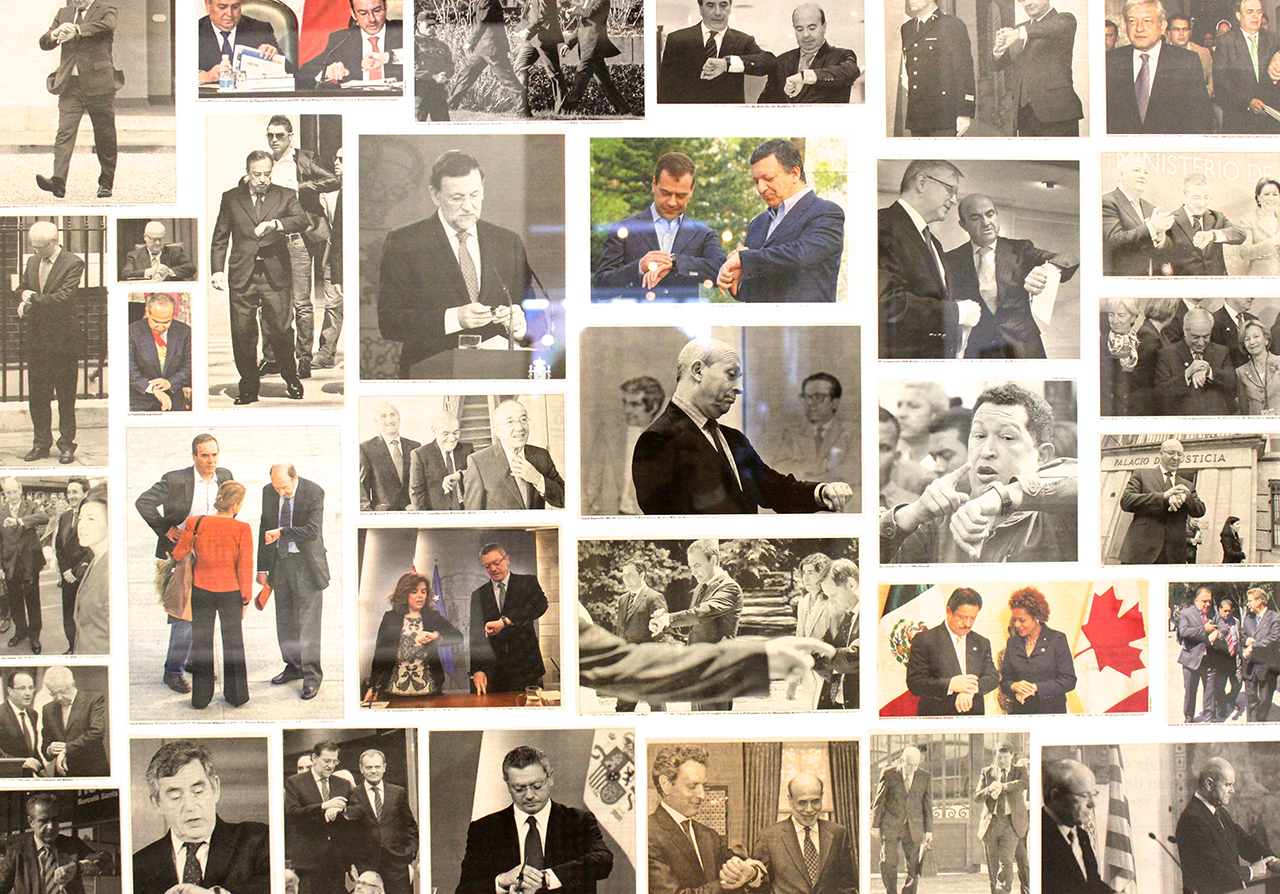
‘Vulnerabilia’ at the Museum of Contemporary Art Detroit unites us in scenes tragic and trivial
Photo: Artist Jonathan Hernández’s mother takes in his work, on display at MOCAD through Jan. 3, 2016.
Things that happen in the newspaper: tears, anguish, fire, crashes, people checking their watches. The cultural tropes of daily print media are never so apparent as in the work of Jonathan Hernández, artist and subject of the most recent installment of Detroit Affinities, a piece of programming at the Museum of Contemporary Art Detroit made possible by a $30,000 grant from Knight Foundation.
Hernández began this collection of works, titled “Vulnerabilia,” more than a decade ago, clipping and saving print images from his daily newspaper and eventually grouping them into collections according to subject. What emerges are not just the predictably dramatic moments, like plane crashes or natural disasters, but the repetition of exceedingly mundane gestures—people sitting in cars, for example. This paints a portrait of daily life in terms of high tragedy, but also daily drama—people with eyes closed in pain or reflection, people wiping their faces, people covering their faces with their hands. Like any collection, repeated motifs have an inherent power, but the fact that this is a collection of spontaneous human gestures and experiences gives it gravitas and underscores our basic human vulnerability, as the title would suggest.

Detail from a collection of plane crash images in “Vulnerabilia” by Jonathan Hernández.
It is easy to acknowledge the sweeping events that tend to draw us together—catastrophes, to be sure, but also sporting events like the Olympics or cultural celebrations like the Oscars. But Hernández’s pieces subtly point to the ways we are unconsciously united, participating in daily rituals and reactions that speak to a more universal human experience. This obsessive collecting of our “newsworthy” moments acts as a commentary on media culture, but also seems to stand as an exploration of the human experience, aggregating the visual data to reveal our trending humanity.
In terms of Hernández’s “affinity” with the “United States of Latin America” show taking place in the main exhibition space at MOCAD, there is an obvious connection in the sense that he is a Mexican artist. The Detroit Affinities series seeks to pair five Detroit artists with five artists from outside the city, putting their work in conversation. Hernández’s conceptual pairing is with Greg Fadell, who showed a body of work, “History Repeats Itself,” that dealt entirely with works appropriated from the art history canon, in various states of erasure. In terms of using borrowed or found imagery, and perhaps in drawing upon an outside source as a historic “record,” there is some overlap in Fadell’s and Hernández’s work—but the approach seems markedly different. While Fadell intervenes directly with his image set, revealing the underlying system of art valuation by dismantling it, Hernández is dealing in accumulation and careful preservation.

Detail from a collection of images featuring people checking their watches in “Vulnerabilia” by Jonathan Hernández.
Dealing, as it does, with a system revealed through the repetition of cultural signifiers, “Vulnerabilia” recalls the museum’s previous exhibition: Rob Pruitt’s “The Obama Paintings,” a series of more than 2,300 portraits of the president that was exhibited at the same time as Fadell’s installation.
A multilayered conversation is emerging at MOCAD, as it circles around themes of media, nationalism, memory and erasure. Whether we are aware of it or not, we are all taking place in that conversation, as our gestures and impulses feed back into the reality we build, through media, through communities, in our country and in ourselves.
Recent Content
-
Artsarticle ·
-
Artsarticle ·
-
Artsarticle ·
